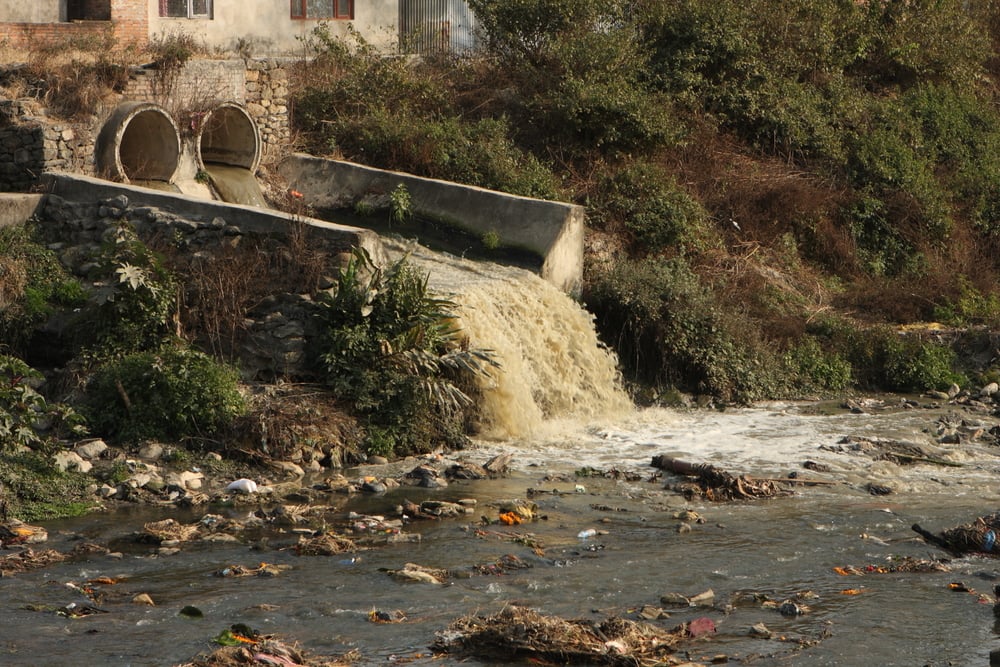Brackish Water Treatment
Brackish Water Treatment

Saltwater infiltration of well water systems is fairly common for homeowners near the ocean or coastal rivers. While not the most harmful form of contamination, brackish water often has a salty taste and can cause scale buildup in fixtures and appliances due to high levels of sodium, metals, and other dissolved substances—known as total dissolved solids (TDS).
The term “brackish” refers to water with salt concentrations between 1,000 and 10,000 PPM. For comparison, seawater contains about 30,000 to 40,000 PPM of salt.
Distillation removes salt from brackish water by heating it into steam and condensing it to separate the salts and minerals. Solar distillation uses sunlight and a dome to collect clean water, while multistage flash distillation heats water under pressure in multiple chambers. These methods are typically used in large-scale operations like those in Saudi Arabia.
The most efficient solution for residential use is a high-quality reverse osmosis system. RO systems use a semi-permeable membrane to separate clean water from salt and other impurities, offering a reliable way to reduce TDS and improve taste.

In regular osmosis, water flows from a solution with lower salt concentration to a solution with higher salt concentration. In reverse osmosis, the application of pressure greater than the osmotic pressure reverses the water flow, causing it to move from a high-concentration solution to a lower-concentration solution, producing pure, salt-free water.
This diagram illustrates a standard installation of the aforementioned systems:
Note that the above diagram also includes a calcite upflow neutralizer. This can be a worthwhile addition to your treatment system, as it will neutralize your water's pH level and add back some of the hardness (calcium) lost during RO filtration.
With the right pretreatment and RO system, your brackish water will turn to tasty, salt-free water in no time and stay that way for years to come.
More on Brackish Water
Brackish water is a type of water that contains more dissolved salts than fresh water but less than salt water or sea water. Its salt concentration is 1,000 to 10,000 parts per million (PPM), which is higher than fresh water but lower than seawater. Brackish water can be found in various sources, including estuaries, rivers, and underground aquifers. Brackish water's total dissolved solids (TDS) level is critical in determining its suitability for various uses, including drinking water and industrial applications.
Sources and Occurrence
Brackish water is commonly found in areas where fresh river water meets salty seawater, such as in estuaries, deltas, and coastal areas. It can also be found in underground brackish groundwater sources, including deep fossil aquifers. The salinity levels of brackish water can vary depending on the area's location, geology, and climate. In some regions, brackish water is a significant source of water scarcity, and desalination methods are used to treat brackish water and make it suitable for drinking and other uses.
Importance of Treatment
Treating brackish water is essential to remove dissolved mineral salts and other contaminants that can make it unsuitable for drinking water and other uses. Reverse osmosis (RO) is a leading desalination technology used to treat brackish water and produce high-quality water. The reverse osmosis process involves forcing brackish water through a semipermeable membrane that removes dissolved mineral salts and other contaminants, producing fresh water that is suitable for drinking and other uses.
Treatment Methods
Several methods are available to treat brackish water, including reverse osmosis (RO), distillation, and ion exchange. Reverse osmosis systems are widely used to desalinate brackish water and produce high-quality water. These systems use a semi-permeable membrane to remove dissolved mineral salts and other contaminants from brackish water, producing fresh water suitable for drinking and other uses. Other treatment methods, such as distillation and ion exchange, can also be used to treat brackish water, depending on the specific water chemistry and treatment goals.
Reverse Osmosis System Design
A reverse osmosis system typically consists of several components, including a pre-treatment system, a high-pressure pump, and a semi-permeable membrane. The pre-treatment system is used to remove suspended solids and other contaminants that can damage the semi-permeable membrane. The high-pressure pump is used to force the brackish water through the semi-permeable membrane, which removes dissolved mineral salts and other contaminants, producing fresh water. The system design will depend on the specific water chemistry, treatment goals, and factors such as energy efficiency and operational costs. A well-designed reverse osmosis system can provide high-quality water and help address water scarcity issues in areas where brackish water is a significant source of drinking water.
If you have any further questions about saltwater or water treatment in general, e-mail us at support@cleanwaterstore.com, contact us on Facebook, or use our online contact form. Thanks for reading!














